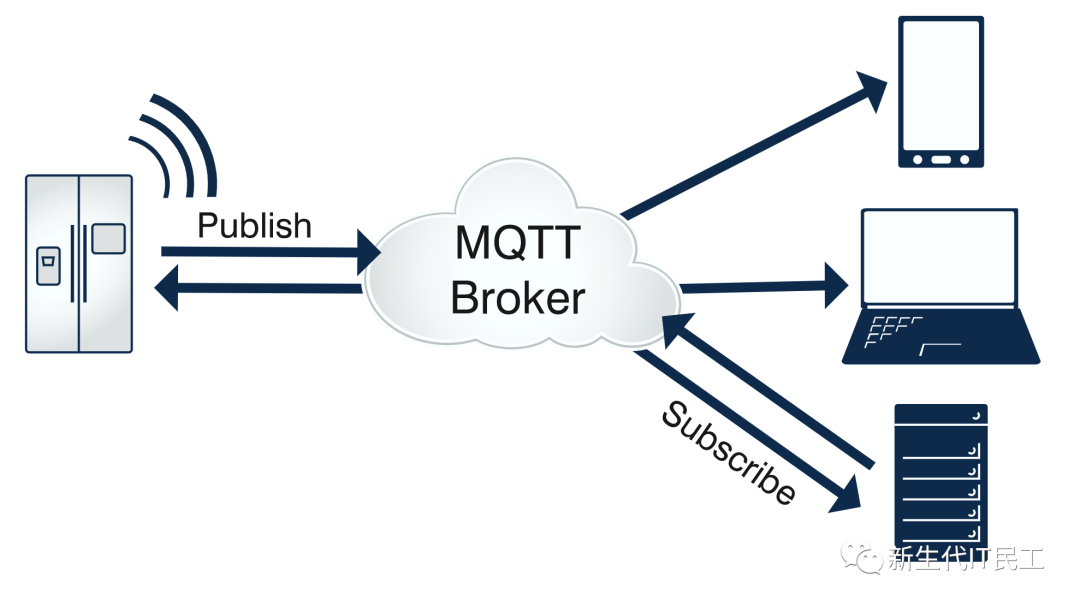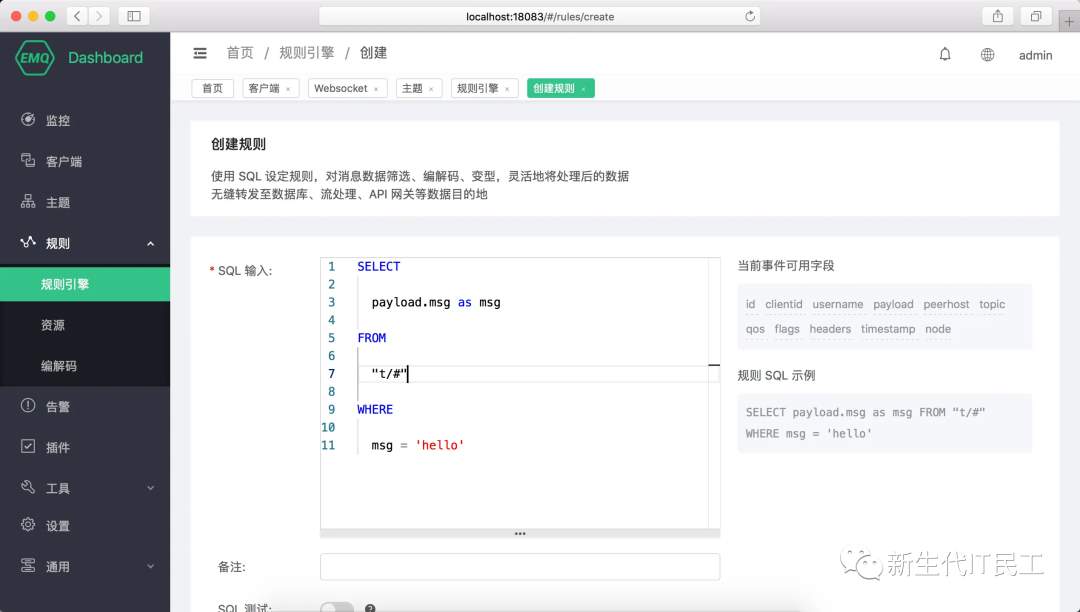MQTT (Message Queuing Telemetry Transport) and EMQX are two widely used communication technologies in the Internet of Things (IoT) and messaging systems. Although both are used for real-time communication and data transmission, there are some notable differences in their design, functionality, and features. This article will detail the differences between MQTT and EMQX, including protocol architecture, functional features, applicable scenarios, and advantages and disadvantages.
MQTT
Protocol Architecture
MQTT is a lightweight publish/subscribe communication protocol. It consists of an MQTT broker, publishers, and subscribers.

-
MQTT Broker: The MQTT broker is responsible for routing and delivering messages. It receives messages from publishers and sends them to the corresponding subscribers.
-
Publisher: Publishers create and publish messages to a specified topic. Any subscribers that are subscribed to that topic will receive the message.
-
Subscriber: Subscribers subscribe to topics of interest and receive all messages under that topic.
Functional Features
MQTT has the following functional features:
-
Lightweight: MQTT has a relatively small protocol header, reducing network bandwidth consumption.
-
QoS (Quality of Service) Levels: MQTT provides three different QoS levels, allowing users to choose the appropriate level according to their needs to ensure message reliability and transmission efficiency.
-
Persistent Connection: MQTT supports persistent connections between clients and servers. Even if the client disconnects, the server can retain unsent messages for the client to deliver upon reconnection.
Applicable Scenarios
MQTT is widely used in the following scenarios:
-
Internet of Things (IoT): MQTT is the preferred protocol for communication between IoT devices, as its lightweight and low bandwidth consumption features allow it to operate efficiently on resource-constrained devices.
-
Sensor Networks: MQTT can be used for data collection and real-time monitoring in sensor networks. Sensors can publish data, while monitoring stations can receive and process this data by subscribing to topics.
EMQX
Protocol Architecture
EMQX is an open-source messaging broker software based on MQTT, providing highly reliable and scalable MQTT broker services. It supports over a million MQTT connections.

Functional Features
EMQX has the following functional features:
-
High Reliability: EMQX provides high reliability message distribution services, supporting various persistence mechanisms, failover, and load balancing mechanisms.
-
Horizontal Scalability: EMQX can achieve horizontal scalability by adding more nodes and can automatically handle message routing in a cluster.
-
Security: EMQX supports various security mechanisms, such as SSL/TLS encryption, authentication, and access control, to ensure communication security.
Applicable Scenarios
EMQX is widely used in the following scenarios:
-
IoT Cloud Platform: EMQX can serve as a core component of IoT cloud platforms, used for managing and processing large-scale MQTT device connections and data transmission.
-
Real-time Data Processing: The high reliability and horizontal scalability of EMQX make it very suitable for processing large-scale real-time data, such as real-time monitoring systems, smart homes, and industrial automation.
Differences and Comparisons
The following are the differences and comparisons between MQTT and EMQX:
-
Protocol Architecture: MQTT is a lightweight communication protocol, while EMQX is an open-source messaging broker software based on MQTT.
-
Functional Features: MQTT provides lightweight publish/subscribe communication, while EMQX offers highly reliable and scalable MQTT broker services.
-
Applicable Scenarios: MQTT is more suitable for IoT and sensor networks, while EMQX is better suited for IoT cloud platforms and large-scale real-time data processing.
-
Deployment and Management: MQTT can be used on any platform that supports the MQTT protocol, while EMQX requires deployment and management of a messaging broker server.
Conclusion
MQTT and EMQX are two commonly used communication technologies in the Internet of Things and messaging systems. MQTT is a lightweight publish/subscribe communication protocol suitable for IoT and sensor networks. EMQX is an open-source messaging broker software based on MQTT that provides high reliability, scalability, and security in MQTT broker services, suitable for IoT cloud platforms and large-scale real-time data processing.